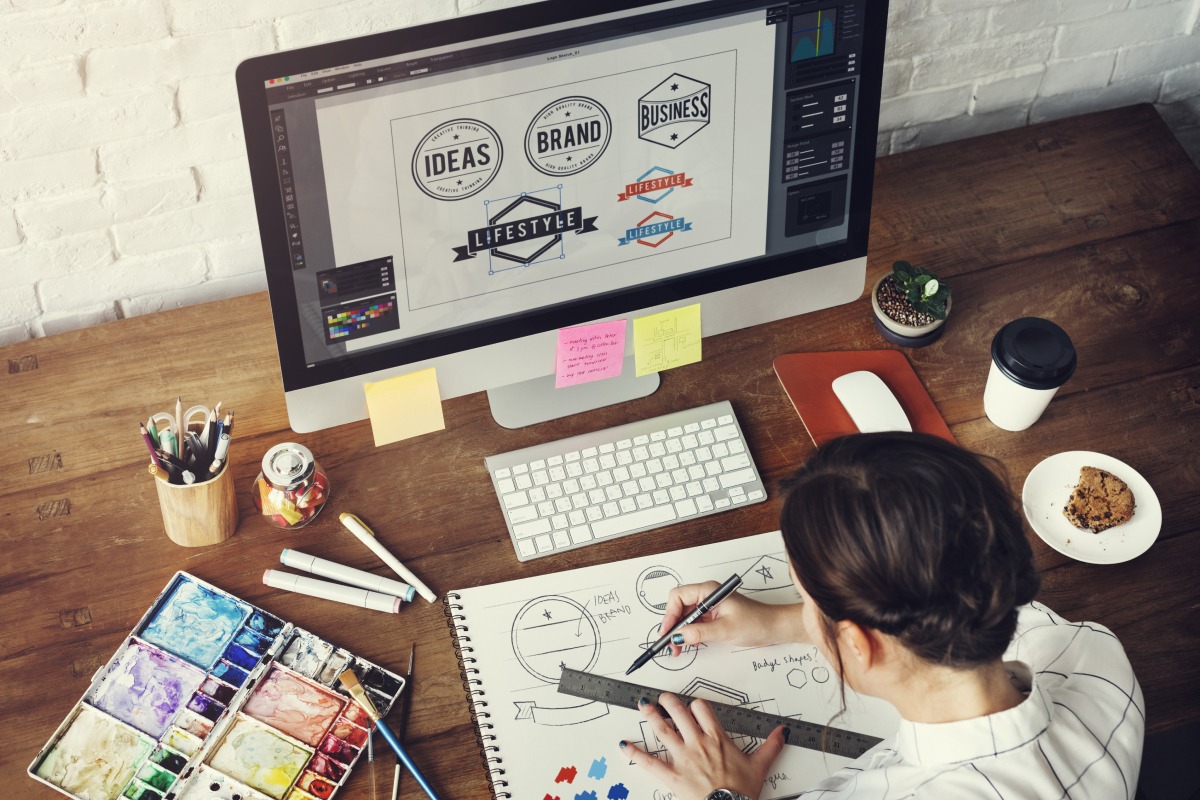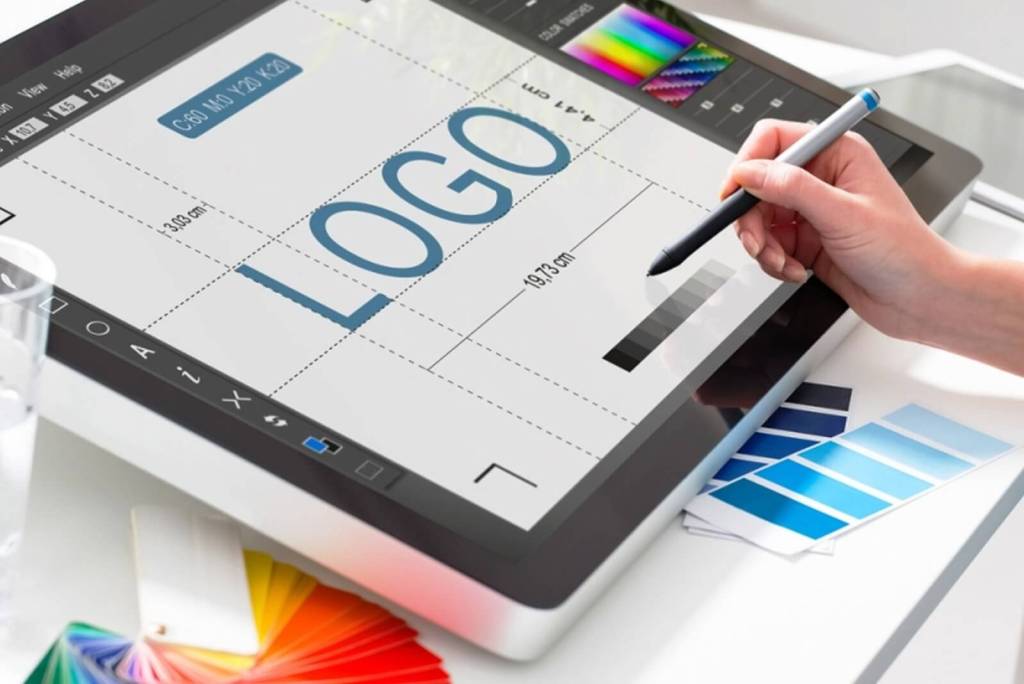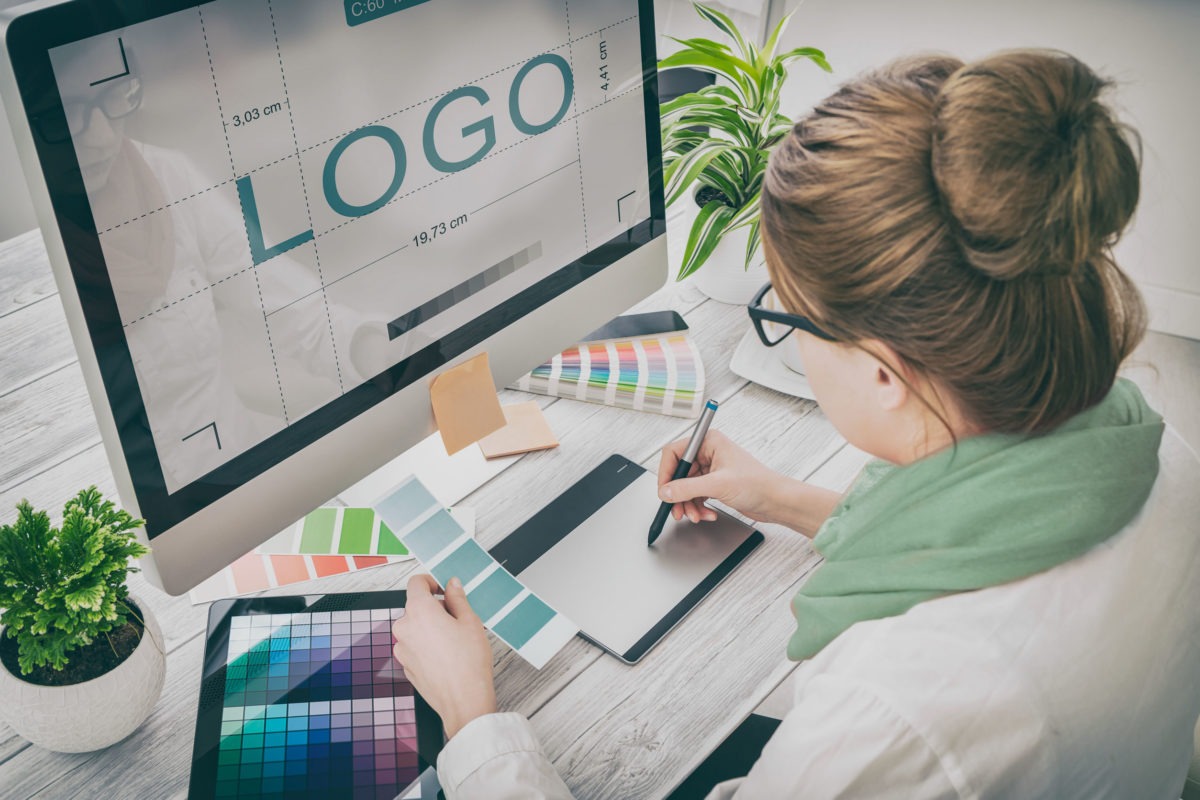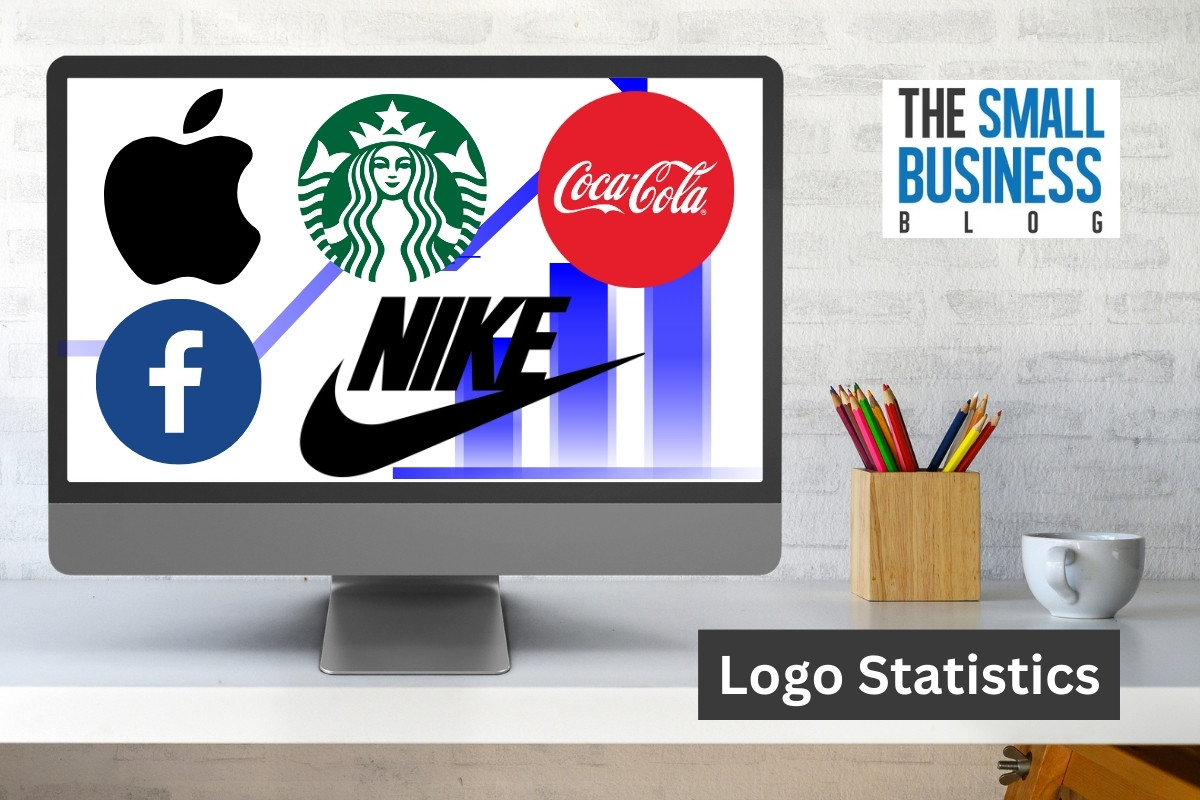Diving into the many angles of logo statistics will highlight the power and essential nature it holds for any company.
A logo is a definitive part of the brand image and a significant correlation that customers get attached to over time.
It’s a core representation that can make or break a company and becomes the face of brand identity for years down the road.
For example, 75% of people recognize a brand by its logo alone.
Although it takes five to seven instances of seeing the logo before a customer remembers a brand, it won’t take long before it’s ingrained in their mind.
A company logo may seem like a simple task, but there are many statistics that showcase how a logo can affect a brand and its customer base.
In this resource, you’ll get a detailed overview of different logo statistics for 2024 and how they correlate to businesses of all types.
Post Contents
- 1 Key Statistics
- 2 A Comprehensive Overview of Logo Statistics in 2024
- 3 First Impressions are Everything
- 4 A Logos’ Effects on Brand Recognition
- 5 The Importance of Color Choice
- 6 The Costs of Creating a Brand Logo
- 7 Statistics Behind the Relationship Between Branding, Consumers, and Marketing
- 8 How a Logo Can Make for a Powerful Brand
- 9 Nuances of Rebranding
- 10 Final Notes
- 11 Sources
Key Statistics
- 30% of Americans agree the logo is the first thing they notice about a brand
- 42% of consumers say a logo conveys a brand’s personality
- 50% of consumers are much more likely to patronize a company with a logo they’re familiar with
- 60% of consumers avoid brands with unappealing logos, regardless of positive reviews
- 78% of consumers believe logos to be a vital work of art for any company
A Comprehensive Overview of Logo Statistics in 2024

You’ll find that the statistics in this article vary quite a bit, but they also deliver a level of insight that provide a better understanding of a logo’s impact on a business.
It’s much more than just shapes and colors; whereas some brands don’t understand this, many others boast some of the most iconic logos in the world.
Logos are also known to be effective throughout different stages of the customer experience.
At first glance, a consumer may not have much relation to the brand.
However, after purchasing a product or seeing the logo on a consistent basis, it isn’t uncommon for a consumer to become attached to the brand identity in some way.
Keep reading below for a look at various logo statistics that are rather insightful, to say the least.
First Impressions are Everything
By about the fifth to seventh interaction with your logo, consumers will start to remember your brand from the logo alone.
When it comes to first impressions, this happens within 90 seconds of encountering your brand logo and could be a deal breaker if consumers don’t resonate with it.
It doesn’t take nearly as long to process the image of a logo, as the human brain can see everything it has to offer in roughly 400 milliseconds.
It’s known that 75% of respondents believe that the visual appeal of a logo is directly correlated to the brand’s success.
Around 50% of consumers are more likely to buy products or services if they are able to immediately recognize a company’s logo.
Another interesting statistic is that roughly 60% of consumers are bound to avoid a company if they find the logo to be off-putting.
Generally, over one-third of consumers consider a business with a stellar logo to be a high-quality business, regardless of whether they have looked at reviews or not.
These statistics also highlight that consumers feel differently about these topics, and some people may not be worried about the brand’s logo at all.
(DailyBlogging)
A Logos’ Effects on Brand Recognition
How consumers recognize a brand considers many different factors, but a lot of it has to do with the logo.
After the name and color of a logo, around 30% of Americans agree that the design of a logo is the first thing they notice.
36% of respondents also agree that a stellar logo is what helps them remember a brand outside of the company name.
A good example of a memorable logo would be the classic Mcdonald’s logo.
It’s so common and seen in so many places that even four-year-olds recognize the brand by the logo.
In our current era, the most recognizable logos are as follows:
- Coca-Cola
- Starbucks
- Apple
- McDonalds
- Nike
- Amazon
- YouTube
- Adidas
Above all, Coca-Cola reigns supreme as the most recognizable logo on the planet, which can be immediately identified by 94% of people across the globe.
The design is just one component of a successful logo, as colors are an equally important consideration for any brand.
(DailyBlogging)
The Importance of Color Choice
If you were to analyze many common logos, you might notice various trends in color options.
It’s known that certain colors can have an effect on our mood and the way we perceive objects in the world.
This fact is utilized when it comes to logo creation.
Many brands capitalize on colors that’ll catch the attention of consumers and resonate with them in a positive way.
You can get a brief look at the percentage of Fortunate 500 companies that use various colors in their logos down below.
- Blue = 40%
- Black = 25%
- Red = 16%
- Green – 7%
- Grey = 5%
- Other = 3%
- Yellow = 1.4%
- Orange = 1.4%
The more popular colorways are utilized to a further extent for a reason, but some may argue this isn’t as important as logo design.
Nevertheless, around 95% of leading brands on the market make use of one or two colors in their logo.
From a design standpoint, it’s common for 10 to 20 hours of work to go into a logo.
A big reason for this is that a brand’s logo will be a core part of its image for years down the road.
Of course, a company can always rebrand, but this can significantly affect the organization’s reputation.
You’ll also find that there are different types of logos, some being more popular than others.
A few examples include:
- Combination logo = 61%
- Wordmark = 31%
- Lettermark = 5%
- Emblem = 2.4%
There’s quite a bit of science that goes into creating a logo that’s bound to leave a lasting impression.
Aside from logo design and colorways, the font is another aspect that should be carefully thought out.
Some of the most popular font choices for logos include:
- Cursive
- Serif
- Sans Serif
This may seem relatively simple, but when you think about it, that’s the point.
Brand names should be easily readable and digestible on logos.
Many companies make the mistake of utilizing fancy fonts, which can make the lettering hard to read.
In some cases, if the logo is too difficult to read, many people will simply give up and look away, and this is the last thing a company wants.
(Zippia)
The Costs of Creating a Brand Logo

There’s no set rate when it comes to creating a memorable brand logo.
When you look at a variety of different companies, you’re bound to discover a variety of costs associated with the creation of their logo.
Although costs may vary from one design to the next, there are a few interesting statistics regarding this particular topic.
Budgets can vary significantly from small to large companies, which can directly correlate to how much money goes into the project.
- Regarding logo expenditures over $1,000, only 15% of small businesses are willing to spend that much on logo design.
- Only 67% of small businesses are willing to pay $500 or more for a logo
- Surprisingly, logos created for Coca-Cola, Google, and Microsoft were done for free
- $1.8 billion was spent on the BBC logo
- Only $15 was spent on the original Twitter logo
- The 2007 London Olympics logo cost $625,000
In today’s world, you can expect the starting price for a brand logo to sit around $200.
Sometimes, it also depends on the size of the client, as some companies are happy to pay tens of thousands of dollars for a logo that resonates with the brand’s mission.
Small business owners tend to have to be more frugal with their spending.
Roughly 50% of these types of businesses design the logo themselves or work with in-house designers.
In today’s world, it’s easier than ever to create a logo by yourself with the help of platforms like Canva and Looka.
However, to stand out from the crowd sometimes still requires the artistic hand of a professional.
(FinancesOnline)
Statistics Behind the Relationship Between Branding, Consumers, and Marketing
Creating a logo that’ll work in a brand’s favor from every angle considers more than the design itself.
Marketers, business owners, and consumers all look at logos in a different light, and it’s important that a design resonates with all three.
To highlight different perspectives, around 89% of marketers agree that brand awareness is a top priority for any business.
You can expect that a lot of this awareness is correlated to how memorable a logo is to the consumers.
Consumers can also find a sense of trust in a brand logo.
This may take some time to develop, but after a pleasurable experience with a product or service, consumers are more likely to associate trust with a brand’s logo.
Without even making a purchase, these consumers feel confident in what a company offers and are often happy to recommend them to others.
Data collected throughout the years highlights that brand loyalty is worth 10 times more than a single sale.
You gain longevity from brand loyalty, which is also directly tied to a company’s logo.
(FinancesOnline)
How a Logo Can Make for a Powerful Brand
From consumers, business owners, employees, marketers, and investors, a logo can positively or negatively affect everyone who interacts with a company.
Although brand loyalty and success consider many different factors, a lot of this starts with an excellent logo design.
In regard to investors, 82% of them admit that they’d rather invest in a brand that comes with a robust image and loyal customer base.
A brand that can properly convey its identity with the help of a memorable logo is likely to have more customers that feel connected to it.
57% of consumers admit they’re more likely to spend money with a brand they feel some kind of connection to.
With brands carrying a wide variety of meanings and imagery in their logos, some people simply become a fan of the design and what it represents.
This has led to many consumers having a collectors mindset when it comes to any product a brand releases.
(FinancesOnline)
Nuances of Rebranding

Some companies may decide to rebrand after years of sporting the same logo, while others end up rebranding due to a merger.
For example, 74% of S&P 100 companies end up rebranding acquired assets within the first seven years.
Many of this has to do with new directions taken within these companies to help bring new life into a brand and its consumers.
In other circumstances, rebrands occur because a company is failing, and a new logo and mission have proven highly beneficial for some organizations.
From the other side of the same coin, a rebrand can be a detrimental move if not executed properly.
Some examples of rebranding include the following companies:
- British Petroleum rebranded in 2008, which cost $211 million. Unfortunately, this was a flop for the company as the new design caused a lot of backlash from the public.
- Instagram’s original Polaroid camera icon was ditched for the now modern and more vibrant logo that we’re used to seeing on our phones every day.
- Since the 1970s, Apple has changed its logo on numerous occasions. Although it has held true to the apple shape and design, the colors associated with it have changed quite a bit over time.
These are just a handful of examples, but you’d be surprised how many companies have rebranded in your lifetime.
Some do it more often than others, but a fresh logo design can go a long way to impress existing customers while gaining the attention of many new consumers.
(DailyBlogging)
Final Notes
With the hundreds of logos, we see on a daily basis, most of us don’t think much of what goes into the design process.
Regardless of how much they cost, many companies spend hours of thought into deciding what their logo should look like.
You may be more fond of some logos than others, but you have to consider how many times you decided to make a purchase simply because you saw a logo and brand you could trust.
This article dove into logo statistics for 2024 to shed light on the many facets that play into the design and branding process.






























